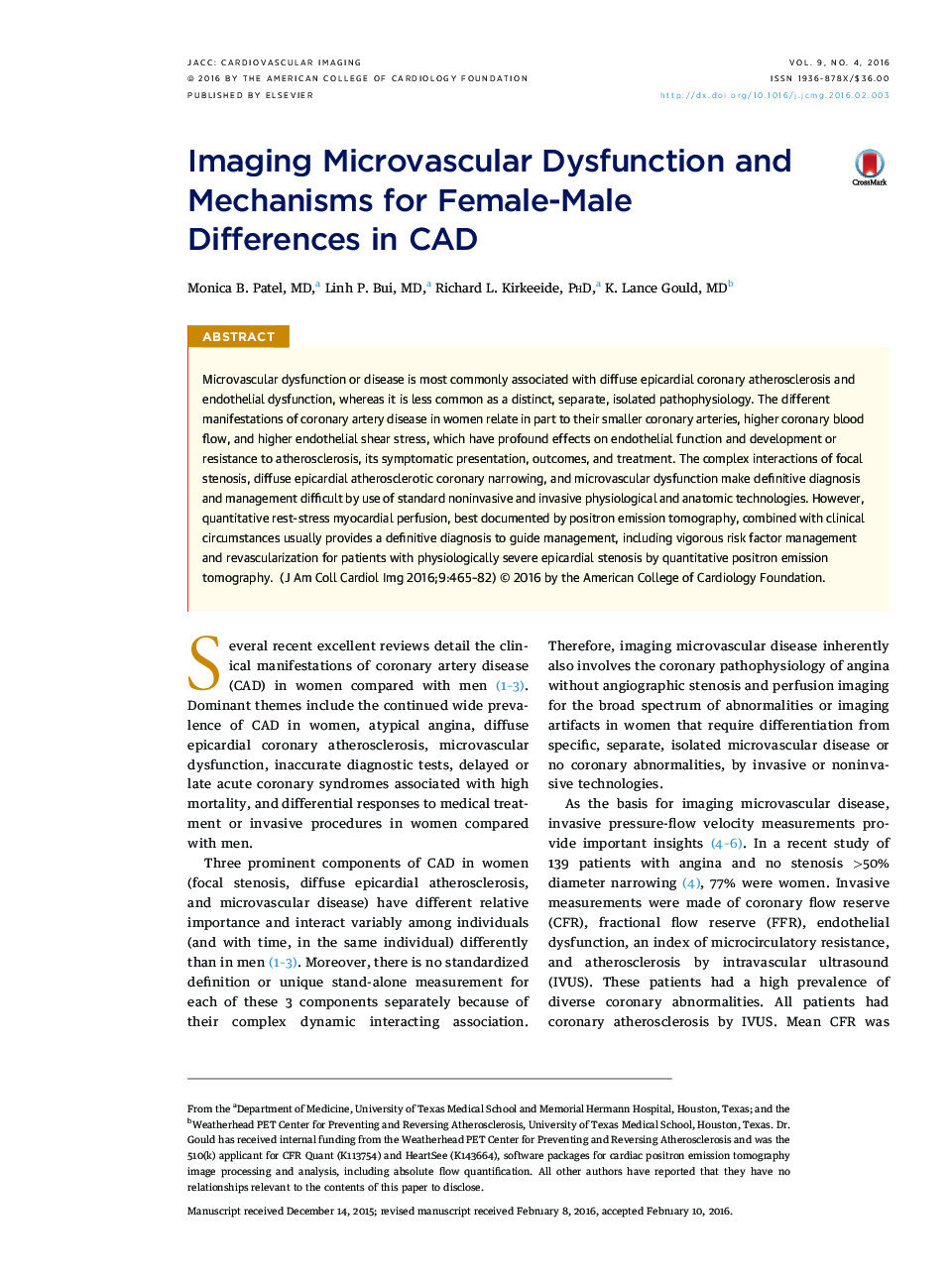| Article ID | Journal | Published Year | Pages | File Type |
|---|---|---|---|---|
| 2937714 | JACC: Cardiovascular Imaging | 2016 | 18 Pages |
Microvascular dysfunction or disease is most commonly associated with diffuse epicardial coronary atherosclerosis and endothelial dysfunction, whereas it is less common as a distinct, separate, isolated pathophysiology. The different manifestations of coronary artery disease in women relate in part to their smaller coronary arteries, higher coronary blood flow, and higher endothelial shear stress, which have profound effects on endothelial function and development or resistance to atherosclerosis, its symptomatic presentation, outcomes, and treatment. The complex interactions of focal stenosis, diffuse epicardial atherosclerotic coronary narrowing, and microvascular dysfunction make definitive diagnosis and management difficult by use of standard noninvasive and invasive physiological and anatomic technologies. However, quantitative rest-stress myocardial perfusion, best documented by positron emission tomography, combined with clinical circumstances usually provides a definitive diagnosis to guide management, including vigorous risk factor management and revascularization for patients with physiologically severe epicardial stenosis by quantitative positron emission tomography.
